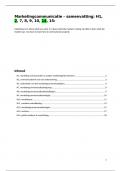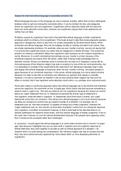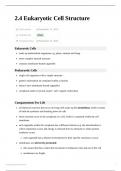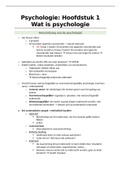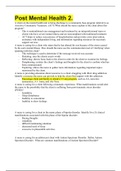4th edition of the book!
CHAPTER 1
Service: all economic activities whose output is not a physical product or construction, is generally
consumed at the time it is produced, and provides added value in forms (such as convenience,
amusement, timeliness, comfort, or health) that are essentially intangible concerns of its first
purchaser.
Intangible means that it (the service or product) is not touchable, you can not hold it or grab it.
Example > you can buy a flight ticket. The ticket itself is tangible, but the flight itself (THE SERVICE) is
intangible, you can not hold the flight, but you can hold the ticket itself.
A service or product is almost never really a 100% tangible or intangible, most of the time it is MORE
tangible or MORE intangible.
Lovelock’s classification of services:
Example for this model
- Healthcare is something that people’s bodies receive. For example you need to be in the
hospital to receive your operation. Or you need to be on the train to get from A to B.
- Education is a service that is directed to your mind. You can receive the service, while not
being present in the place where the service is produced. For example we could receive
online classes when the covid-pandemic was going on.
- Car repair is a service that effects your tangible possessions, in this case: your car > your
tangible car. The recipient does not have to be present for the whole service, but more likely
at the start or the end of the service.
- Banking is a service that effects your intangible possessions, in this case: your bank account.
The service can be delivered in a location that is distant from the customer.
Service can be divided into four distinct categories:
1. Service industries and companies > core product is a service
Examples of pure service companies: Accor (hotels such as Novotel and Ibis), Lufthansa
(transportation), HSBC (banking)
2. Services as products > intangible product offerings
Examples are IBM (computerhardware and – software), Hewlett-Packard. These companies
offer information technology consulting services. But also think about Tesco supermarkets
who offer insurance services and photograph processing.
, 3. Services as experiences > the memory of the experience is the core product
Examples are boutique hotels, Disneyland Paris, but now also more often retailers like Nike.
4. Customer service > support of a company’s core products
Examples: employee in a supermarket who helps you find a product or answers a question,
but also very commonly now are the chat functions on websites right now, or think about a
traditional customer service call center or helplines.
Self-service technologies are becoming more and more important nowadays. For example you see
the self-scan cash registers more often.
Characteristics of services
- Intangibility: a service cannot be seen, felt, tasted or touched in the same manner as
tangible goods. Think about a canoeing tour.
- Heterogeneity: variability, no two services will be precisely alike. People can differ in their
performances from day to day or even hour to hour. Think about a waitress who brings your
coffee with a smile and a nice greeting or someone with a grumpy face and no greeting at all.
- Inseparability: service cannot be separated. The production and the consumption of the
service happen almost simultaneously. Think about ordering a meal in a restaurant and then
consuming the meal, this happens almost at the same time.
- Perishability: services cannot be saved, stored, resold or returned. When you buy a flight
ticket.. you can only use this service at a specific date, time and place. You won’t be able to
use that flight ticket the next day.
, The services marketing triangle
On the right side is the ‘’external marketing’’, this is the place where the firm engages in to set up
it’s customers expectations and promise them what is TO BE delivered. ANYTHING or ANYONE that
communicates to the customer before service delivery can be viewed as a part of external marketing.
Interactive marketing (real-time marketing): this is where promises are kept or broken by
employees, technology, subcontractors or agents.
Than on the left hand side we still have ‘’internal marketing’’, this is the place where the
management arranges everything from recruiting, training, motivating, rewarding etc. so the
providers are able to deliver the promise.

